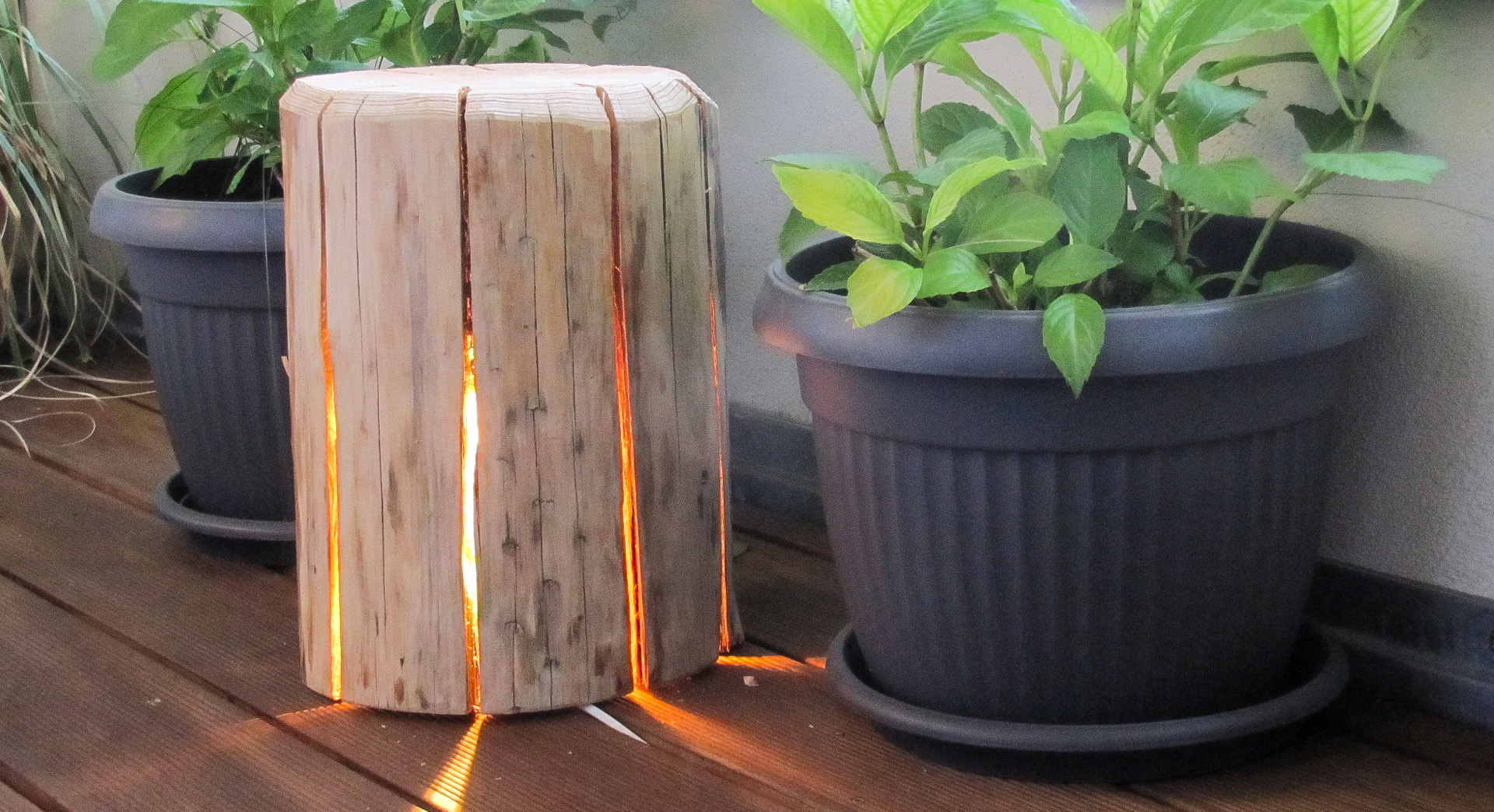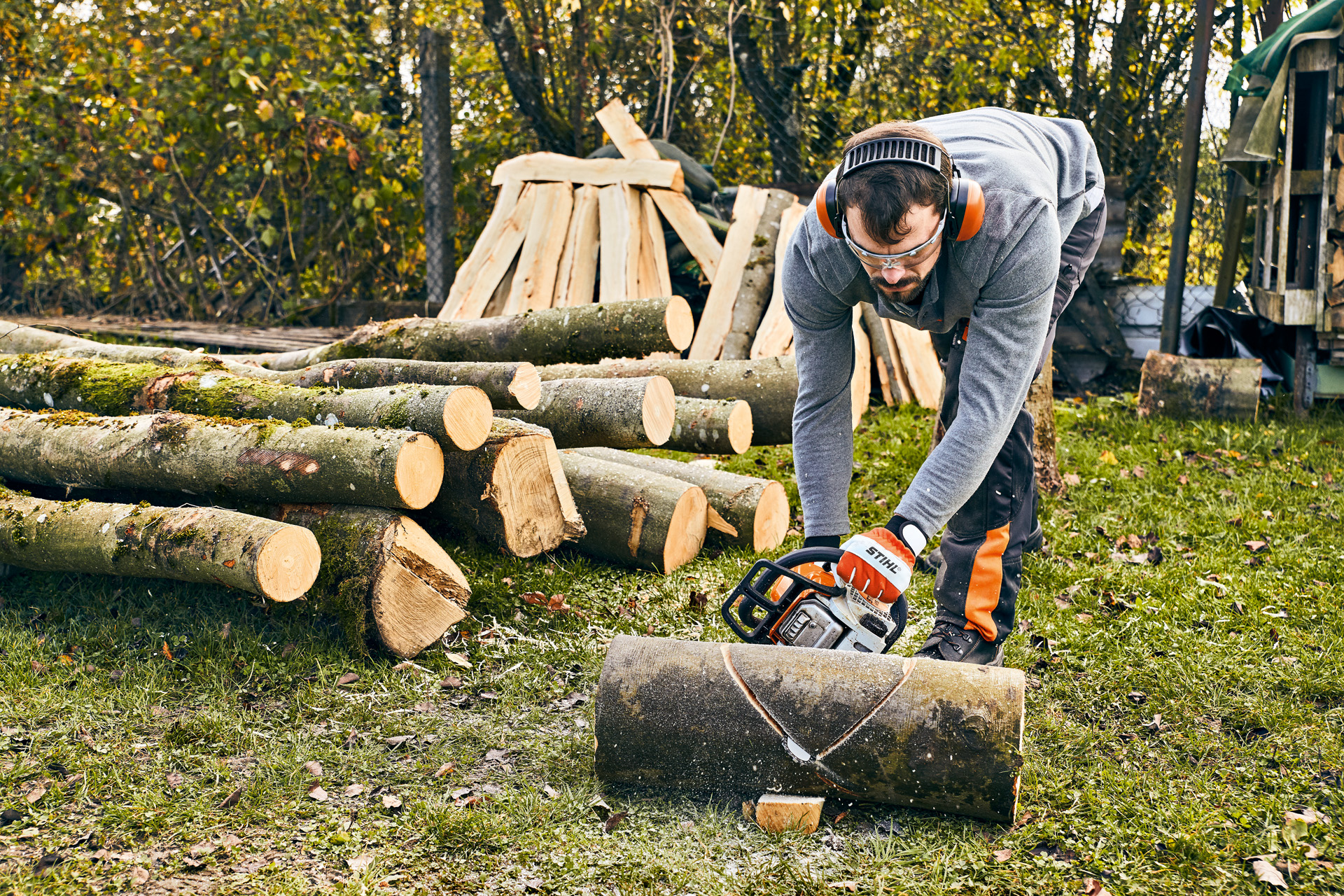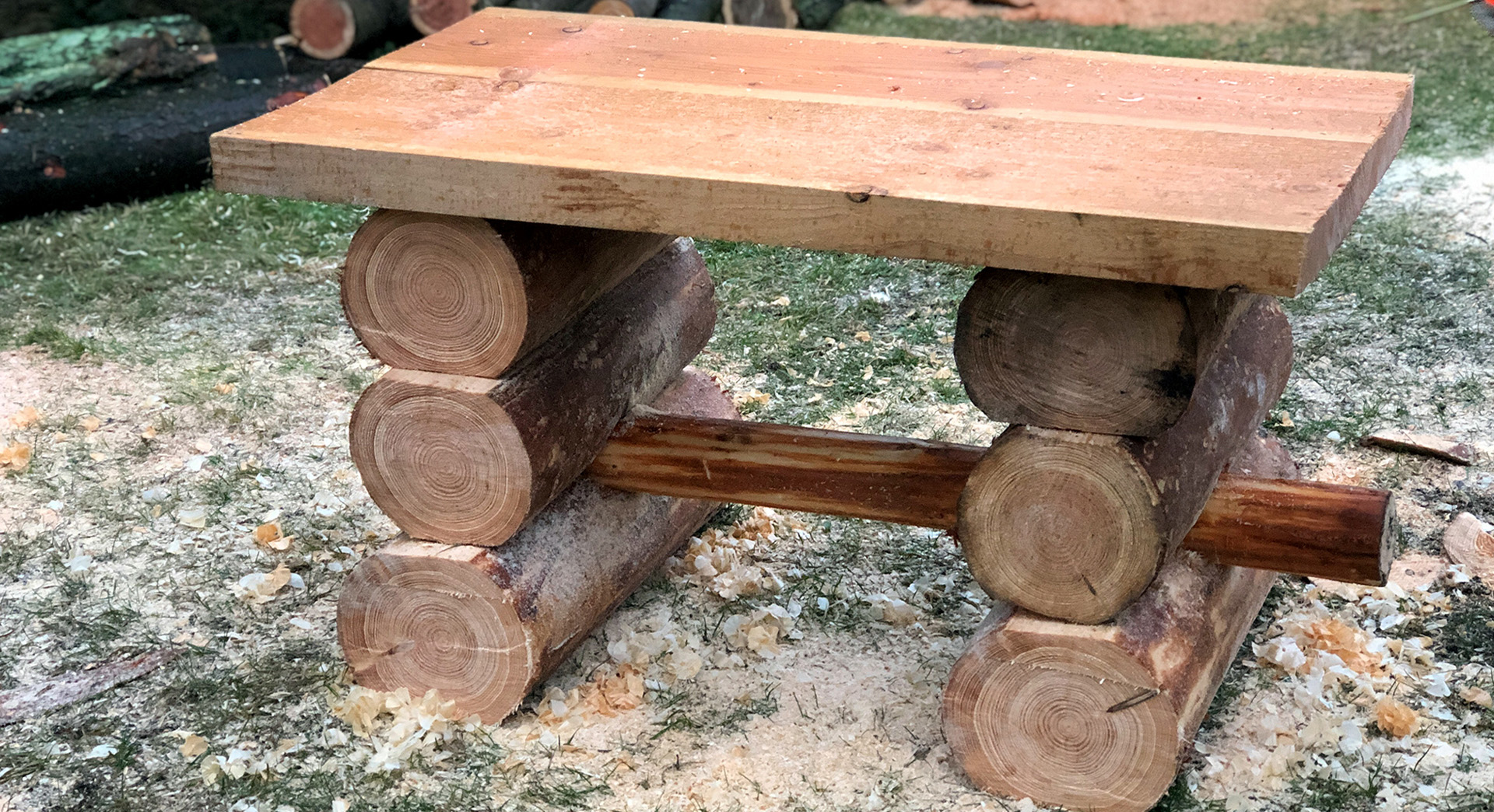Chainsaw carving an owl: just 6 steps to a masterpiece!
Our step-by-step instructions explain how to go about chainsaw carving a realistic owl from wood. Give it a try!
10.04.2025

Chainsaw carving an owl: what you’ll need
- Log (around 20 cm diameter)
- Chainsaw with a carving set
- Ratchet strap
- Chalk/pencil for marking
- Chisel
- Hammer
- Protective clothing
Instructions: Chainsaw carving an owl from wood
Once you have all your materials prepared and your personal protective equipment in place, you can get to work on creating an elegant owl sculpture to practice carving with your chainsaw.

Step 1: debark the trunk
The first step is to prepare the piece of wood you are using for your chainsaw carved owl.
Not sure what type of wood is best for chainsaw carving? Find out more about the fundamentals of chainsaw carving.
Use your chainsaw to remove the bark and sapwood from your trunk; this ensures that your finished owl sculpture will be weather-resistant and robust, as the heartwood is the densest part of a tree.

Step 2: secure your wood and draw the owl
Secure the trunk onto a sturdy subsurface using a ratchet strap, or by firmly screwing it in place. You need to be certain it will not roll away or move as you use your chainsaw to carve it.
Use a pencil or a piece of chalk to draw the rough form of an owl onto the trunk. This is when you need to decide which direction your owl will be facing. Your markings should indicate clear cutting lines for your later carving work with the chainsaw, and mean you can see which large areas can be quickly blocked out first.

Step 3: blocking out
Now it’s time to start carving an owl with a chainsaw. Work from top to bottom: start by carving out a head for your wooden owl and form it into a rounded shape with your chainsaw.
Next, carve out the body of the owl with your chainsaw until the contours are clearly recognisable. Use light movements to guide your chainsaw along the marked lines and carve away all the corners and edges – this approach will give your wooden figure an appealing, natural shape.
Always work with a sharp chainsaw! Not only will dull blades damage the wood you are carving, but they also require more energy to work with. To ensure that your chainsaw work goes smoothly, contact your STIHL dealer to have your chain sharpened or do it yourself.
There are step-by-step instructions on how to sharpen your chainsaw here!
Step 4: work out the fine structure
Now it’s time to add detail to your chainsaw owl wood carving, using the chainsaw to carve wings, a face and feathers.

Face
With a carving chainsaw you can do a great job of bringing out the specific anatomical features of an owl’s face. First use your chalk to draw a vertical line marking the centre of your owl’s face, and remove wood in a V shape on both sides of the line. Next, use careful movements to add contours that bring out the eyes and beak.

Wings
Here’s a tip for when you’re preparing to carve out the wings: the owl’s two wings together form a heart shape. So stand behind the figure and draw a heart onto the wood; make sure that both halves are at the same height, and draw a vertical line to split the shape in two. Now the wings are ready for carving out with your chainsaw.

Feathers
Use your chainsaw to add feathers to the owl’s wings and tail. The lower flight feathers need to be really straight and neatly overlapping to look right. This is best achieved by starting your carving from the middle of the heart (or back of the owl) and working outward.

Talons
Mark the owl’s talons. When owls are perching you can see two or three at the front of each foot; they have four talons in total, of which one is at the back and one can swivel from front to back for better manoeuvrability. Try to carve all of them to the same depth, and keep natural proportions in mind. Leave enough wood around each talon so that afterwards you can use the tip of the chainsaw guide bar to round them off beautifully.

Work slowly and stand back to check your carving work at regular intervals – it’s easier to judge proportions from further away. Don’t cut too deep, just create small accents using the tip of your chainsaw. Less is more at this stage!
STIHL pro tip:
Stop frequently to remove the wood chips you create. This makes it easier to identify even very small errors.

Step 5: add finishing touches
Almost done! The final step is carving out the finer features of your wooden owl using the chainsaw tip or a chisel. This work makes small details such as the talons and individual feathers look particularly delicate and realistic. You can also carve marks to give the impression of feathers on the wings and tail, as well as plumage on the body. For a smooth finish, sand down your owl when you’ve finished the carving work.
Step 6: treat the wood
Your chainsaw owl is ready to admire! To ensure it stays looking its best, you may need to protect your carving project against fungi and rot, depending on the type of wood you have used.
To ensure your chainsaw art is protected from the elements, we recommend the following after-treatment:
- Apply a thin layer of wood-sealing wax to help prevent the carved wood from developing cracks. The best time to do this is between spring and autumn.
- Leave it for a few days after applying the wax.
- Treat the figure with a wood varnish.
Summary: chainsaw carving an owl
- Always wear personal protective equipment when working with a chainsaw!
- Go slowly and stand back frequently as you work, to look at the figure from a distance
- Be cautious when carving: it’s best to make small cuts with your chainsaw. This will help avoid errors that cannot be rectified
- Always prevent your chainsaw from making contact with the ground, so your tool doesn’t wear too quickly
- To protect against discolouration and fungal attack, give your wooden owl a coat of wood-sealing wax.





